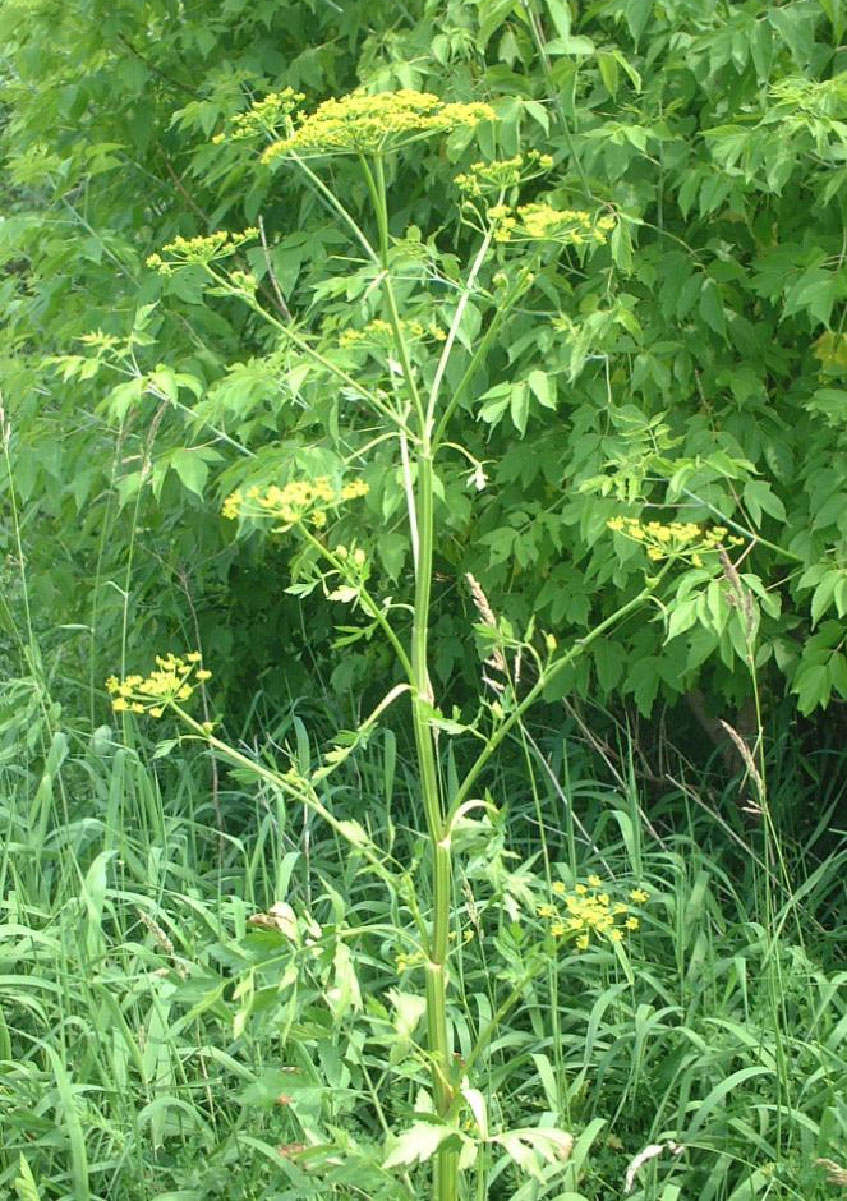
What is wild parsnip?
Wild parsnip (Pastinaca sativa) is an aggressive Eurasian member of the carrot family that grows in sunny areas and tolerates dry to wet soil types. It is often found along highways, in prairies or bordering farmed fields. The plant spreads primarily by seed. Sap from the plant can cause phytophotodermatitis, a light sensitive reaction on your skin. If the juice from broken stalks, leaves or flowers contacts your skin and then is exposed to sunlight, a skin rash will result 24-48 hours later. Symptoms range from slightly reddened skin to large blisters. The blisters may produce a sensation similar to a mild to severe sunburn. The blisters do not spread or itch, as poison ivy rashes do, but they are uncomfortable and leave brown scars that last for a number of months to two years. See your doctor if you develop burn symptoms.
What does wild parsnip look like?
At maturity, wild parsnip is about four to five feet tall. It bears many large flat clusters of yellow-green flowers on a thick stem. Flowers appear from the first of June through July in southern Wisconsin. Seeds form around the end of July. The plant will often have both flowers and seed capsules at the same time. Seeds are flat, oval and about the size of a sunflower seed. After flowering and producing seed, the plant turns brown and dies. The plants have a rosette of basal leaves, as well as leaves arranged alternately on the stem. The leaves are branched into leaflets and have heavily toothed margins. The plant can be confused with prairie parsley (Polytaenia nuttallii), an endangered native species in Wisconsin. Prairie parsley has sparse, light yellow flowers, and long leaves branched into leaflets with few teeth.
How can I control wild parsnip?
Prevention is the best way to control wild parsnip. When wild parsnip is first detected in an area, it can be cut below ground level with a sharp shovel. Be sure to wear long sleeves, long pants and gloves when working with plants. Also, try to work after sunset so that exposure to sunlight does not occur. Plants can also be pulled by hand, if you wear protective gloves. If the wild parsnip population is fairly large, you may use a brush-cutter just after peak bloom and before the plant sets seed. Remove all the cut material. A few weeks later, repeat the treatment to prevent plants from re-sprouting. Treatments may need to be repeated over several years. Herbicides containing the active ingredient glyphosate are also effective against wild parsnip. In high quality natural areas such as prairies, the Department of Natural Resources recommends burning the site and then applying spot treatments of a 1-3% glyphosate solution to wild parsnip rosettes if they re-sprout after burning.
Author: Lisa Johnson, Horticulture Educator for Extension Dane County
Item Number: XHT 1083
Revised: Apr. 27, 2004
Download Article





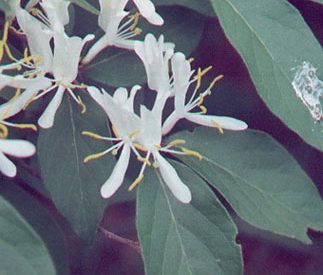 Invasive Exotic Shrub Honeysuckles
Invasive Exotic Shrub Honeysuckles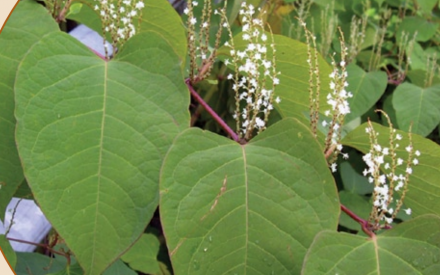 Japanese Knotweed:
Japanese Knotweed: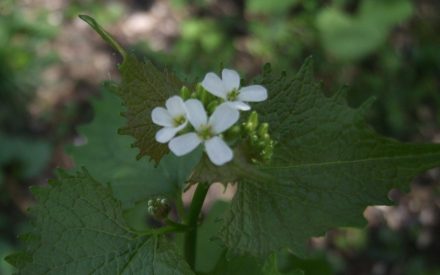 Garlic Mustard
Garlic Mustard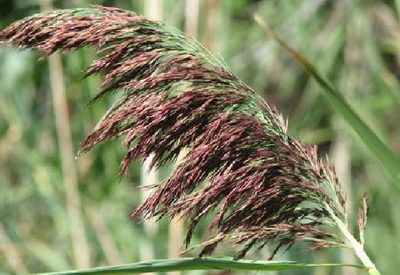 Invasive Phragmites
Invasive Phragmites


